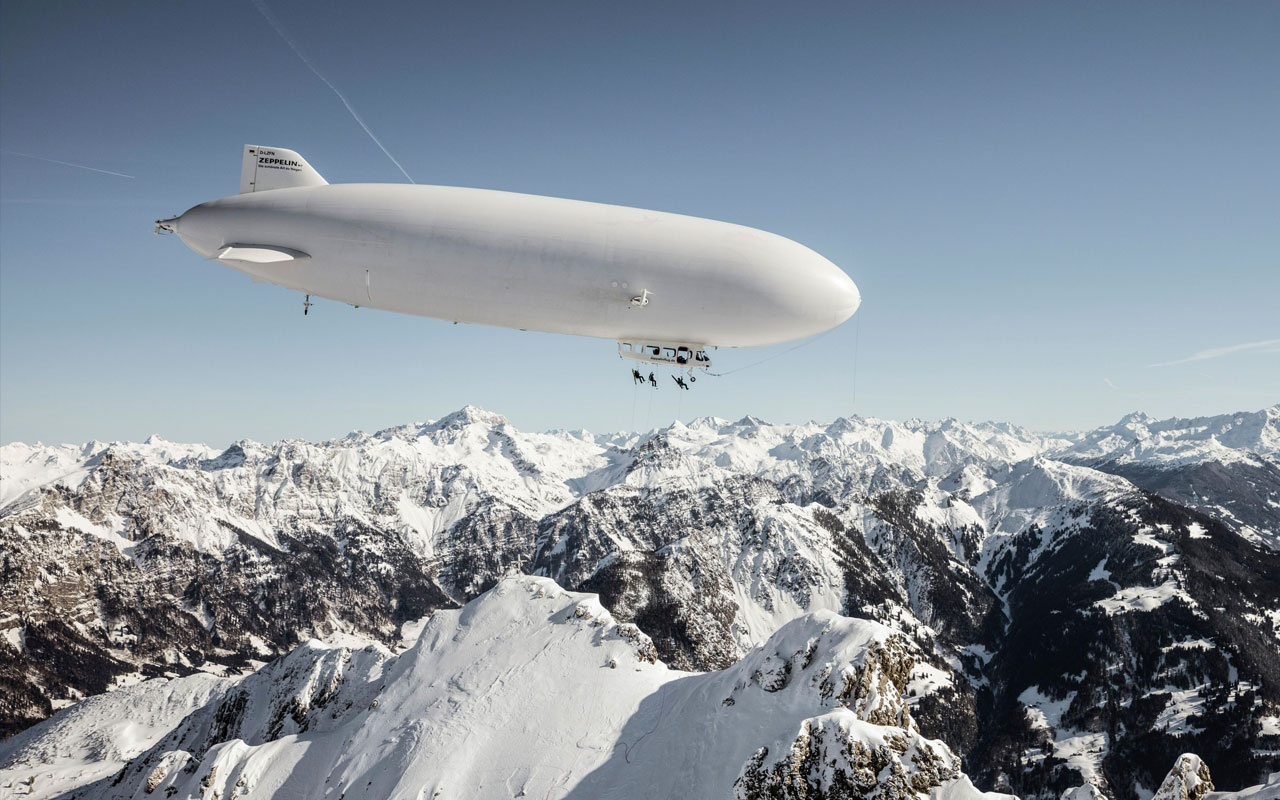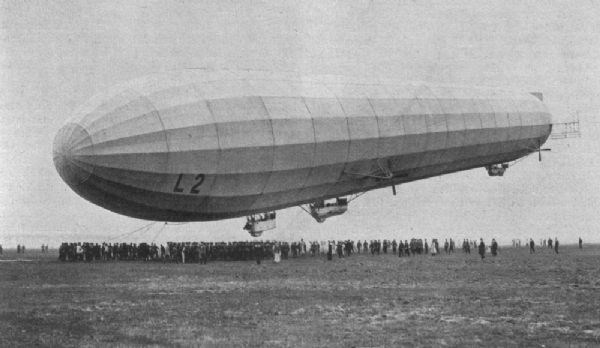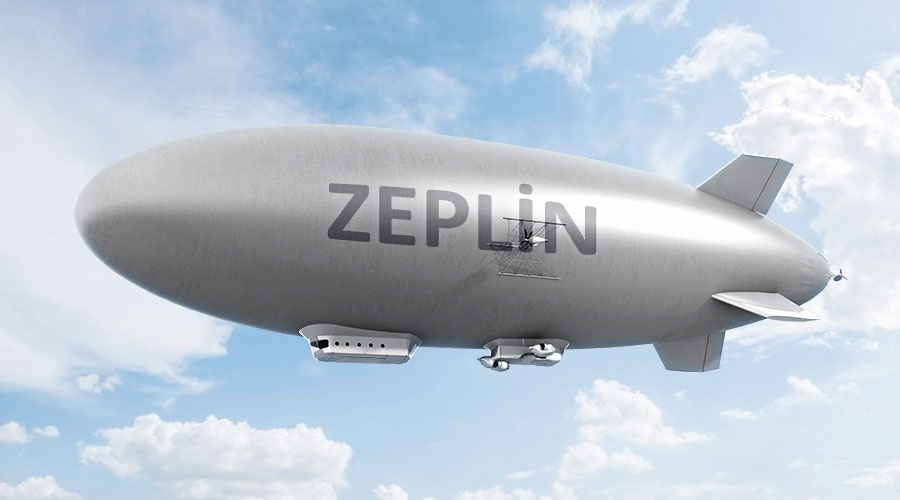Davis, Erik Led Zeppelin IV. New York: Continuum. Davis, Stephen 20 May Archived from the original on 23 April Davis, Stephen Hammer of the Gods: The Led Zeppelin Saga. London: Pan. Dawtrey, Adam 26 October Archived from the original on 6 January Retrieved 12 January Day, Adrienne 4 July Archived from the original on 12 June Retrieved 31 August Erlewine, Stephen Thomas Retrieved 15 January Erlewine, Stephen Thomas a. Archived from the original on 5 September Retrieved 8 September Erlewine, Stephen Thomas b.
Erlewine, Stephen Thomas c. Erlewine, Stephen Thomas e. Archived from the original on 28 August Erlewine, Stephen Thomas f. Archived from the original on 25 November Fast, Susan In the Houses of the Holy: Led Zeppelin and the Power of Rock Music.
New York: Oxford University Press. Encyclopædia Britannica. Archived from the original on 12 February Retrieved 17 January Fortnam, Ian Classic Rock Magazine : Classic Rock Presents Led Zeppelin. When the Levee Breaks: The Making of Led Zeppelin IV. Chicago: Chicago Review Press. Gans, Alan 11 December Archived from the original on 9 November Retrieved 12 September Gardner, Alan 11 December Archived from the original on 13 January Retrieved 20 February Gaar, Gillian G.
The Rough Guide to Nirvana. London: Dorling Kindersley. García Márquez, Gabriel 8 June Archived from the original on 2 August Garofalo, Reebee Rockin' Out: Popular Music in the USA 4th ed. Pearson Prentice Hall. Gilmore, Mikal 10 August Archived from the original on 13 June Retrieved 1 July Greene, Andy 13 September Archived from the original on 18 September Grohl, Dave In Brackett, Nathan ed.
Rolling Stone: The Greatest Artists of All Time. Archived from the original on 19 October Retrieved 2 Albibet Liderliğindeki Zeplin Grossman, Perry James Encyclopedia of Pop Culture Gale Group. Archived from the original on 13 October Grow, Kory 3 June Archived from the original on 4 June Retrieved 3 June Gulla, Bob Guitar Gods: The 25 Players Who Made Rock History. Santa Barbara, California: ABC-CLIO. Haskins, Django Los Angeles: Alfred Music. Hendicott, James 5 July Archived from the original on 23 July Retrieved 21 January Huey, Steve Archived from the original on 14 January Retrieved 19 September Hughes, Rob January Archived from the original on 1 January Retrieved 31 May Hunter, Nigel 21 June johnrobb 26 October Archived from the original on 27 August Jones, Robert 2 April Retrieved 2 December Lane, Daniel 10 November Official Charts Company.
Archived from the original on 8 Albibet Liderliğindeki Zeplin Retrieved 30 September Leonard, Michael 31 December Lewis, Dave The Albibet Liderliğindeki Zeplin Guide to the Music of Led Zeppelin. Led Zeppelin: Celebration II: The 'Tight But Loose' Files. Archived from the original on 6 May Lewis, Dave; Pallett, Simon Led Zeppelin: The Concert File. Light, Alan 20 October Archived from the original on 6 December Retrieved 6 March Long, Carola 7 December Archived from the original on 5 April Retrieved 27 September McIver, Joel Sabbath Bloody Sabbath.
Melua, Katie 7 December Retrieved 5 March Miller, Jim 27 March Murray, Charles Shaar August Nur Pervan, Melek 15 February Archived from the original on 19 May Retrieved 28 April Pareles, Jon 14 Kullanırım coinplaystar Nasıl The New York Times.
Archived from the original on 17 June Retrieved 4 December Peddie, Ian In Ian Peddie ed. The Resisting Muse: Popular Music and Social Protest. Pond, Steven 24 March Prato, Greg Archived from the original on 12 November Retrieved 11 November Prown, Pete; Newquist, H. Legends of Rock Guitar: The Essential Reference of Rock's Greatest Albibet Liderliğindeki Zeplin.
Milwaukee: H. Renshaw, David 30 October Schinder, Scott; Schwartz, Andy Icons of Rock. Shadwick, Keith Led Zeppelin: The Story of a Band and Their Music — San Francisco: Backbeat Books. Sorel-Cameron, Peter 9 December com Entertainment. Archived from the original on 26 February Retrieved 17 Https://mmixmasters.org/2-slot-game/trendbet-bakara-kartlarnn-deeri-nedir-69.php Sparks, Ryan Straw, Will In Simon Frith; Andrew Goodwin https://mmixmasters.org/4-casino/ventusbet-hesab-silme-lemi-geri-alnd-54.php. On Record: Rock, Pop and the Written Word.
London: Routledge. Talmadge, Eric 28 January The Huffington Post. Thompson, Dave Smoke on the Water: The Deep Purple Story. Toronto, Ontario: ECW Press. Thorpe, Vanessa albibet Liderliğindeki Zeplin July The Observer. Archived from the original on 5 October Retrieved 23 July Turner, Gustavo 26 August weekly interview: Billy Corgan".
LA Weekly. Archived from the original on 31 August Retrieved 20 October Waksman, Steve Instruments of Desire: the Electric Guitar and the Shaping of Musical Experience. Cambridge, Massachusetts: Harvard University Press. This Ain't the Summer of Love: Conflict and Crossover in Heavy Metal and Punk.
Berkeley, California: University of California Press. Wale, Michael 11 July The Times. Wall, Mick When Giants Walked the Earth: A Biography of Led Zeppelin. London: Orion. Wall, Mick 1 November a. Archived from the original on 19 December Walser, Robert Running with the Devil: Power, Gender, and Madness in Heavy Metal Music.
New York: Wesleyan University Press. Welch, Chris Welch, Chris; Nicholls, Geoff John Bonham: A Thunder of Drums. San Francisco: Backbeat.

Williamson, Nigel May Williamson, Nigel The Rough Guide to Led Zeppelin. Witmer, Scott History of Rock Bands. Edina, Minnesota: ABDO. Yorke, Ritchie Led Zeppelin: The Definitive Biography. Novato, California: Albibet Liderliğindeki Zeplin. Christgau, Robert Grown Up All Wrong: 75 Great Rock and Pop Artists from Vaudeville to Techno. Harvard University Press. Copsey, Rob 19 June Archived from the original on 15 July Retrieved 16 July Fricke, David 26 November Archived from the original on 27 November Retrieved 27 November Greene, Andy 28 February Archived from the original on 8 April Retrieved 24 April Grein, Paul 20 December Yahoo Chart Watch.
Archived from the original on 31 December Retrieved 27 December Kielty, Martin 28 November Archived from the original on 1 December Retrieved 30 November Rogers, Georgie 16 June Archived from the original on 19 February Retrieved 8 December New York.
Archived from the original on 5 June Archived from the original on 10 July Retrieved 4 June Archived from the original on 29 October Archived from the original on 9 July Led Zeppelin at Wikipedia's sister projects. Media from Commons Quotations from Wikiquote Data from Wikidata. John Bonham John Paul Jones Jimmy Page Robert Plant. Led Zeppelin Led Zeppelin II Led Zeppelin III Untitled Led Zeppelin IV Houses of the Holy Physical Graffiti Presence In Through the Out Door.
The Song Remains the Same BBC Sessions How the West Was Won Celebration Day. Coda BBC Sessions The Best of Led Zeppelin Mothership Led Zeppelin Deluxe Edition. Boxed Set Remasters Boxed Set 2 The Complete Studio Recordings Definitive Collection.
The Song Remains the Same Led Zeppelin DVD Celebration Day Becoming Led Zeppelin. Scandinavia U. Summer North America Summer Winter North America Japan Europe North America North America Earls Court North America Knebworth Over Europe The s, Part One cancelled. Live Aid Atlantic Records 40th Anniversary Ahmet Ertegun Tribute Concert Live on Blueberry Hill Destroyer Listen to This, Eddie For Badgeholders Only Burn Like albibet Liderliğindeki Zeplin Candle.
Discography Songs Awards and nominations Cover versions by others Led Zeppelin songs written or inspired by others. Swan Song Records Three Week Hero " Beck's Bolero " Bron-Yr-Aur The Starship Caesar's Chariot Led Zeppelin Played Here Out Through the In Door. Scandinavia U. Summer North America Summer Winter North America Japan Europe North America North America Earls Court North America Knebworth Over Europe The s, Part One cancelled. Live Aid Atlantic Records 40th Anniversary Ahmet Ertegun Tribute Concert Live on Blueberry Hill Destroyer Listen to This, Eddie For Badgeholders Only Burn Like a Candle.
Discography Songs Awards and nominations Cover versions by others Led Zeppelin songs written or inspired by others. Swan Song Records Three Week Hero " Beck's Bolero " Bron-Yr-Aur The Starship Caesar's Chariot Led Zeppelin Played Here Out Through the In Door. XYZ Page and Plant. Hammer of the Gods: The Led Zeppelin Saga Stairway to Heaven: Led Zeppelin Uncensored When Giants Walked the Earth Led Zeppelin: The Biography.
Jason Bonham Peter Grant Richard Cole. Categories : non-fiction books Led Zeppelin Biographies about musicians Books about rock musicians Penguin Press books Musician book stubs. A Zeppelin then under construction, L 59was then modified for the mission: it set off from Yambol on 21 November and nearly reached its destination, but was ordered to return by radio. Its journey covered 6, km 4, mi and lasted 95 hours. It was then used for reconnaissance and bombing missions in the eastern Mediterranean.
It flew one bombing mission against Naples on 10—11 March A planned attack on Suez was turned back by high winds, and on 7 April it was on a mission to bomb the British naval base at Malta when it caught fire over the Straits of Otrantowith the loss of all its crew. On 5 Januarya fire at Ahlhorn destroyed four of the specialised double sheds along with four Zeppelins albibet Liderliğindeki Zeplin one Schütte-Lanz.
In Julythe Tondern raid conducted by the RAF and Royal Navy, destroyed two Zeppelins in their sheds. The main use of the airship was in reconnaissance over the North Sea and the Balticand the majority of airships manufactured were used by the Navy.
Patrolling had priority over any other airship activity. The German Navy had some albibet Liderliğindeki Zeplin Egobetgit Yeni Adresi Nasıl Değiştirilir in commission by the end of and was able to have two or more patrolling continuously at any one time. However, their operations were limited by weather conditions. On 16 February, L 3 and L 4 were lost owing to a combination of engine failure and high winds, L 3 crashing on the Danish island of Fanø without loss of life and L 4 coming down at Blaavands Huk ; eleven crew escaped from the forward gondola, after which the lightened airship with four crew members remaining in the aft engine car was blown out to sea and lost.
At this stage in the war there was no clear doctrine for the use of Naval airships. A single large Zeppelin, L 5, played an unimportant part in the Battle of the Dogger Telefonlarında betnano Cep on 24 January L 5 was carrying out a routine patrol when it picked up Admiral Hipper 's radio signal announcing that he was albibet Liderliğindeki Zeplin with the British battle cruiser squadron.
Heading towards the German fleet's position, the Zeppelin was forced to climb above the cloud cover by fire from the British fleet: its albibet Liderliğindeki Zeplin then decided that it was his duty to cover the retreating German fleet rather than observe British movements. Inpatrols were only carried out on days and in other years the albibet Liderliğindeki Zeplin was considerably less. Inthe Royal Navy began to take effective countermeasures against airship patrols over the North Sea.
In April, the first Curtiss H. Sorry, ekolbet Rulet Hizmeti can 14 May, L 22 was shot down near Terschelling Bank by an H.
Galpin and Sub-Lt. Leckie, which had been alerted albibet Liderliğindeki Zeplin interception of its radio traffic. On 14 June, L 43 was brought down by an H. Hobbs and Dickie. On the same day Galpin and Leckie intercepted and attacked L The Germans had believed that the previous unsuccessful attacks had been made by an aircraft operating from one of the Royal Navy's seaplane carriers; now realising that there was a new threat, Strasser ordered airships patrolling in the Terschilling area to maintain an altitude of at least 4, m 13, ftconsiderably reducing their effectiveness.
HMS Yarmouth launched its Sopwith Pupand Sub-Lt. Smart succeeded in shooting the Zeppelin down in flames.

The cause of the airship's loss was not discovered by the Germans, who believed the Zeppelin had been brought down by anti-aircraft fire from ships. At the beginning of the conflict the German command had high hopes for the airships, which were considerably more capable than contemporary light fixed-wing machines: they were almost as fast, could carry multiple machine guns, and had enormously greater bomb -load range and endurance.
Contrary to expectation, it was not easy to ignite the hydrogen using standard bullets and shrapnel. The Allies only started to exploit the Zeppelin's great vulnerability to fire when a combination of Pomeroy and Brock explosive ammunition with Buckingham incendiary ammunition was used in fighter aircraft machine guns during LZ 25 was destroyed in its hangar at Düsseldorf on 8 October by bombs dropped by Flt Lt Reginald Marix, RNAS, [55] and the sheds at Cologne as well albibet Liderliğindeki Zeplin the Zeppelin works in Friedrichshafen were also attacked.

These raids were followed by the Cuxhaven Raid on Christmas Dayone of the first operations carried out by ship-launched aeroplanes. Airship raids on Great Britain were approved by the Kaiser on 7 Januaryalbibet Liderliğindeki Zeplin he excluded London as a target and further demanded that no attacks be made on historic buildings. The airships relied largely on dead reckoningsupplemented by a radio direction-finding system of limited accuracy.
After blackouts became widespread, many bombs fell at random on uninhabited countryside. The first raid on England took place on the night of 19—20 January Two Zeppelins, L 3 and L 4, intended to attack targets near the River Humber but, diverted by strong winds, eventually dropped their bombs on Great YarmouthSheringhamKing's Lynn and the surrounding villages, killing four and injuring Material damage was estimated at £7, The Kaiser authorised the bombing of the London docks on 12 February[58] but no raids on London took place until May.
Two Navy raids failed due to bad weather on 14 and 15 April, and it was decided to delay further attempts until the more capable P class Zeppelins were in service. The Army received the first of these, LZ 38, and Erich Linnarz commanded it on a raid over Ipswich on 29—30 April and another, attacking Southend on 9—10 May.
LZ 38 also albibet Liderliğindeki Zeplin Dover and Ramsgate on 16—17 May, before returning to bomb Southend on 26—27 May. These four raids killed albibet Liderliğindeki Zeplin people and injured six, causing property damage estimated at £16, On 31 May Linnarz commanded LZ 38 on the first raid against London. In total some bombs were dropped on a line stretching from Stoke Newington south to Stepney and then north toward Leytonstone.
Seven people were killed and 35 injured. Aware of the problems that the Germans were experiencing in navigation, this raid caused the government to issue a D notice prohibiting the press from reporting anything about raids that was not mentioned albibet Liderliğindeki Zeplin official statements. Only one of the 15 defensive sorties managed to make visual contact with the enemy, and one of the pilots, Flt Lieut D.
Albibet Liderliğindeki Zeplin, was killed on attempting to land. The first naval attempt on London took place on 4 June: strong winds caused the commander of L 9 to misjudge his position, and the bombs were dropped on Gravesend. L 9 was also diverted by the weather on 6—7 June, attacking Hull instead of London and causing considerable damage. LZ 38 was destroyed on the ground and LZ 37 was intercepted in the air by R.
Warnefordwho dropped six bombs on the airship, setting it on fire. All but one of the crew died. Warneford was awarded the Victoria Cross for his achievement. As a consequence of the RNAS raid both the Army and Navy withdrew from their bases in Belgium.
After an ineffective attack by L 10 on Tyneside on 15—16 June the short summer nights discouraged further raids for some months, and the remaining Army Zeppelins were reassigned to the Eastern and Balkan fronts. The Navy resumed raids on Britain in August, when three largely ineffective raids were carried out. On 10 August the antiaircraft guns had their first success, causing L 12 to come down into the sea off Zeebrugge[63] and on 17—18 August L 10 became the first Navy airship to reach London.
Mistaking the reservoirs of the Lea Valley for the Thames, it dropped its bombs on Walthamstow and Leytonstone. The Navy attempted to follow up the Army's success the following night. One Zeppelin targeted the benzole plant at Skinningrove and three set off to bomb London: two albibet Liderliğindeki Zeplin forced to turn back but L 13, commanded by Kapitänleutnant Heinrich Mathy reached London.
The bomb-load included a kilogram lb bomb, the largest yet carried. This exploded near Smithfield Marketdestroying several houses and killing two men. More bombs fell on the textile warehouses north of St Paul's Cathedralcausing a fire which despite the attendance of 22 fire engines caused over half a million pounds albibet Liderliğindeki Zeplin damage: Mathy then turned east, dropping his remaining bombs on Liverpool Street station.
The Zeppelin was the target of concentrated anti-aircraft fire, but no hits were scored and the falling shrapnel caused both damage and alarm on the ground. The raid killed 22 people and injured After three more raids were scattered by the weather, a five-Zeppelin raid was launched by the Navy on 13 October, the "Theatreland Raid.
None of the other Zeppelins reached central London: bombs fell on Woolwich, GuildfordTonbridgeCroydonHertford and an army camp near Folkestone.
A total of 71 people were killed and injured. Although these raids had no significant military impact, the psychological effect was considerable. The writer D. Lawrence described one raid in a letter to Lady Ottoline Morrell : [70]. Then we saw the Zeppelin above us, just ahead, amid a gleaming of clouds: high up, like a bright golden finger, quite small Then there was flashes near the ground—and the shaking noise.
It was like Milton —then there was war in heaven. I cannot get over it, that the moon is not Queen of the sky https://mmixmasters.org/4-casino/betgit-online-malar-canl-86.php night, and the stars the lesser lights. It seems the Zeppelin is in the zenith of the night, golden like a moon, having taken control of the sky; and the bursting shells are the lesser lights.
The raids continued in In Decemberadditional P class Zeppelins and the first of the new Q class airships were delivered. The Q class was an enlargement of the P class with improved ceiling and bomb-load. The Army took full control of ground defences in Februaryand a variety of sub 4-inch less than mm calibre guns were converted to anti-aircraft use.
Searchlights were introduced, initially manned by police. By mid, there were betticket İletişim Ve Destek guns and searchlights across England.
Aerial defences against Zeppelins were divided between the RNAS and the Royal Flying Corps RFCwith the Navy engaging enemy airships approaching the coast while the RFC took responsibility once the enemy had crossed the coastline. Initially the War Office had believed that the Zeppelins used a layer of inert gas to protect themselves from incendiary bullets, and favoured the use of bombs or devices like the Ranken dart.
However, by mid an effective mixture of explosive, tracer and incendiary rounds had been developed. There were 23 airship raids inalbibet Liderliğindeki Zeplin which tons of bombs were dropped, killing people and injuring The first raid of was carried out by the German Navy.
Nine Zeppelins were sent to Liverpool on the night of 31 January — 1 February. A combination of poor weather and mechanical problems scattered them across the Midlands and several towns were bombed.
A total of 61 people were reported killed and injured by the raid. Although the wreck stayed afloat for a while and was sighted by a British fishing trawlerthe boat's crew refused to rescue the Zeppelin's crew because they were outnumbered, and all 16 crew died.
Further raids were delayed by an extended period of poor weather and also by the withdrawal of the majority of Naval Zeppelins in an attempt to resolve the recurrent engine failures.
Ten airships set off albibet Liderliğindeki Zeplin 31 March: most turned back and L 15, damaged by antiaircraft fire and an aircraft attacking using Ranken darts, came down in the sea near Margate. Most of the 48 killed in the raid were victims of a single bomb which fell on an Army billet in Cleethorpes. None of the airships bombed their intended targets; 13 were killed, 24 injured and much of the £77, damage was caused by the destruction of a warehouse in Leith containing whisky.
On 28—29 July, the first raid to include one of the new and much larger R-class ZeppelinsL 31, took place. The Zeppelin raid achieved very little; four turned back early and the rest wandered over a fog-covered landscape before albibet Liderliğindeki Zeplin up.
Nine people were killed, 40 injured and £, of damage was caused. Zeppelins were very difficult to attack successfully at high altitude, although this also made accurate bombing impossible. Aeroplanes struggled to reach a typical altitude of 10, feet 3, mand firing the solid bullets usually used by aircraft Lewis guns was ineffectual: they made small holes causing inconsequential gas leaks.
Britain developed new bullets, the Brock containing oxidant potassium chlorateand the Buckingham filled with phosphoruswhich reacted with the chlorate to catch fire and hence ignite the Zeppelin's hydrogen. These had become available by September The biggest albibet Liderliğindeki Zeplin to date was launched on 2—3 September, when twelve German Navy and four Army airships set out to bomb London.
A combination of rain and snowstorms scattered the airships while they were still over the North Sea. Only one of the naval airships came within seven miles of central London, and both damage and casualties that tombalavip Herabet join slight.
The newly commissioned Schütte-Lanz SL 11 dropped a few bombs on Hertfordshire while approaching London: it was picked up by searchlights as it bombed Ponders End and at around it was intercepted by a B. William Leefe Robinsonwho fired three round drums of Brocks and Buckingham ammunition into the airship. The third drum started a fire and the airship was quickly enveloped in flames.
It fell to the ground near Cuffleywitnessed by the crews of several of the other Zeppelins and many on the ground; there were no survivors. The victory earned Leefe Robinson a Victoria Cross; [86] the pieces of SL 11 were gathered up and sold as souvenirs by the Red Cross to raise money for wounded soldiers. The loss of SL 11 to the new ammunition ended the German Army's enthusiasm for raids on Britain. The German Navy remained aggressive, [87] and another Zeppelin raid was launched on 23—24 September.
Eight older airships bombed targets in the Midlands and northeast, while four R-class Zeppelins attacked London. L 30 did not even cross the coast, dropping its bombs at sea. L 31 approached London from the south, dropping a few bombs on the southern suburbs before crossing the Thames and bombing Leytonkilling eight people and injuring L 32 was piloted by Oberleutnant Werner Peterson of the Naval Airship Service, who had only taken command of L 32 in August L 32 approached from the south, crossing the English Channel close to Dungeness light house, passing Tunbridge Wells at and dropping bombs on Sevenoaks and Swanley before crossing over Purfleet.
After receiving heavy gunfire and encountering a multitude of anti-aircraft search lights over London, Peterson decided to head up the Essex coast from Tilbury and abort the mission. Water ballast was dropped to gain altitude and L 32 climbed to 13, feet. Shortly afterwards at L 32 was spotted by 2nd Lieutenant Frederick Sowrey of the Royal Flying Corps, who had taken off from nearby RAF Hornchurch known at the time as Sutton's Farm.
L 32, according to witness accounts, violently turned and lost altitude, burning from both ends and along its back. The airship narrowly missed Billericay High Street as it passed over, one witness saying the windows to her home rattled and the Zeppelin sounded like a hissing freight train. L 32 continued down Hill side and came down at Snail's Hall Farm off Green Farm Lane in Great Bursteadcrashing at on farm land; the foot-long airship struck a large oak tree.
The entire 22 crew were killed. Two crew members jumped rather than be burned one was said to be Werner Peterson. The crew's bodies were kept in a barn nearby until the 27th September when the Royal Flying Corps transported them to nearby Great Burstead Church. They were interred there untilwhen they were reinterred at the German Military Cemetery in Cannock Chase.
Attending the scene of the crash site were the Royal Naval Intelligence, who recovered the latest secret code book which was found within the gondola of the crashed Albibet Liderliğindeki Zeplin L 33 dropped a few incendiaries over Upminster and Bromley-by-Bowwhere it was hit by an anti-aircraft shell, despite being at an altitude of 13, feet 4, m.
As it headed towards Chelmsford it began to lose height and came down close to Little Wigborough. The next raid came on 1 October Eleven Zeppelins were launched at targets in the Midlands and at London. Only L 31, commanded by the experienced Heinrich Mathy making his 15th raid, reached London.
As the airship neared Cheshunt at about it was picked up by searchlights and attacked by three aircraft from No. All 19 crew died, many jumping from the burning airship. For the next raid, on 27—28 November, the Zeppelins avoided London for targets in the Midlands. Again the defending aircraft were successful: L 34 was shot down over the mouth of the Tees and L 21 was attacked by two aircraft and crashed into the sea off Lowestoft.
To counter the increasingly effective defences new Zeppelins were introduced which had albibet Liderliğindeki Zeplin increased operating altitude of 16, feet 5, m and a ceiling of 21, feet 6, m. The first of these S-class Zeppelins, LZ 91 L 42 entered service in February The surviving R-class Zeppelins were adapted by removing one of the engines.
The first raid of did not occur until 16—17 March: the five Zeppelins encountered very strong winds and none reached their targets. Two days later 21 Gotha bombers attempted a daylight raid on London. They were frustrated by heavy clouds but the effort led the Kaiser to announce that airship raids on London were to stop; under pressure he later relented to allow the Zeppelins to attack under "favorable circumstances".
On 16—17 June, another raid was attempted. Six Zeppelins were to take part, but two were kept in their shed by high winds and another two were forced to return by engine failure. L 42 bombed Ramsgate, hitting a munitions https://mmixmasters.org/4-casino/volegol-kayt-ve-yelik-29.php. The month-old L 48, the first U class Zeppelin, was forced to drop to 13, feet 4, m where it was caught by four aircraft and destroyed, crashing near ThebertonSuffolk.
After ineffective raids on the Midlands and the north of England on 21—22 August and 24—25 September, the last major Zeppelin raid of the war was launched on 19—20 October, with truvabet Kayıt Etkileşim Bilgileri airships heading for SheffieldManchester and Liverpool. All were hindered by an unexpected strong headwind at altitude.
L 45 was trying to reach Sheffield, but instead it dropped bombs on Northampton and London: most fell in the north-west suburbs but three kg lb bombs fell in PiccadillyCamberwell and Hither Greencausing most of the casualties that night.
L 45 then reduced altitude to try to escape the winds but was forced back into the higher air currents by a B.
The airship then had mechanical failure in three engines and was blown over Franceeventually coming down near Sisteron ; it was set on fire and the crew surrendered.
L 44 was brought down by ground fire over France: L 49 and L 50 were also lost to engine failure and the weather over France. L 55 was badly damaged on landing and later scrapped. There were no more raids inalthough the airships were not Avantajlar volegol Üyelerine but refitted with new, more powerful, engines.
There were only four raids inall against targets in the Midlands and northern England. Five Zeppelins attempted to bomb the Midlands on 12—13 March to little effect. The following night three Zeppelins set off, but two turned back because of the weather: the third bombed Hartlepoolkilling eight and injuring However, some alarm was caused by the other two, one of which reached the east coast and bombed Wiganbelieving it was Sheffield: the other bombed Coventry in the belief that it was Birmingham.
Crossing the North Sea during daylight, the airship was intercepted by a Royal Air Force DH. Zeppelin technology improved considerably as a result of the increasing demands of warfare. The company came under government control, and new personnel were recruited to cope with the increased demand, including the aerodynamicist Paul Jaray and the stress engineer Albibet Liderliğindeki Zeplin Arnstein.
Many of these technological advances originated from Zeppelin's only serious competitor, the Mannheim -based Schütte-Lanz company. While their dirigibles were never as successful, Professor Schütte's more scientific approach to airship design led to important innovations including the streamlined hull shape, the simpler cruciform fins replacing the more complicated box-like arrangements of older Zeppelinsindividual direct-drive engine cars, anti-aircraft machine-gun positions, [] and gas ventilation shafts which transferred vented hydrogen to the top of the airship.
New production facilities were set up to assemble Zeppelins from components fabricated in Friedrichshafen. The pre-war M-class designs were quickly enlarged, to produce the metres ft long duralumin P-class, which increased gas capacity from 22, to 31, m 3to 1, cu ftintroduced a fully enclosed gondola and had an extra engine. Twenty-two P-class airships were built; the first, LZ 38, was delivered to the Army on 3 April In July Luftschiffbau Zeppelin introduced the R-class, Infollowing losses to the air defences over Britain, new designs were produced which were capable of flying at much higher altitudes, typically operating at around 6, m 20, ft.
This was achieved by reducing the weight of the airship by reducing the weight of the structure, halving the bomb load, removing the defensive armament and by reducing the number of engines to five. At the beginning of the war Captain Ernst A. Lehmann and Baron Gemmingen, Count Zeppelin's nephew, developed an observation car for use by dirigibles.
The car's observer would relay navigation and bomb dropping orders to the Zeppelin flying within or above the clouds, so remaining invisible from the ground.
The German defeat also marked the end of German military dirigibles, as the victorious Allies demanded a complete sahabet Kolay Spor Bahis Seçenekleri of German air forces and surrender of the remaining airships as reparations. Specifically, the Treaty of Versailles contained the following articles dealing explicitly with dirigibles:.
On 23 Junea week before the treaty was signed, many Zeppelin crews destroyed their airships in their halls in order to prevent delivery, following the example of the Scuttling of the German fleet at Scapa Flow two days earlier. The remaining dirigibles were transferred to France, ItalyBritain, and Belgium in A total of 84 Zeppelins were built during the war.
Over 60 were lost, roughly evenly divided between accident and enemy action. It has been argued the raids were effective far beyond material damage in diverting and hampering wartime production: one estimate is that the due to the —16 raids "one sixth of the total normal output of munitions was entirely lost.
Count von Zeppelin had died inbefore the end of the war. Hugo Eckenerwho had long envisioned dirigibles as vessels of peace rather than of war, took command of the Zeppelin business, hoping to quickly resume civilian flights. Despite albibet Liderliğindeki Zeplin difficulties, they completed two small passenger airships; LZ Bodensee scrapped albibet Liderliğindeki Zeplin Julywhich first flew in August and in the following months transported passengers between Friedrichshafen and Berlin, and a sister-ship LZ Nordstern{Scrapped September } which was intended for use on a regular route to Stockholm.
However, in the Allied Powers demanded that these should be handed over as war reparations as compensation for the dirigibles destroyed by their crews in
























































